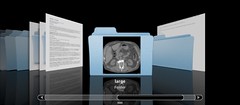In this post, I wanted to document the steps that I had to follow to enable the A/V controls (play, pause, next song, previous song) buttons of my Motorola-S9 headset with my windows computer using iTunes.
Setup used:
- Motorola S9 headset
- Dell Latitude D830
- Dell internal Bluetooth adapter (2.0 adapter with A2DP and AVRCP profiles)
- Standard Drivers from Dell’s site (Toshiba drivers)
- iTunes (v7.6.1.9)
I successfully paired the Motorola S9 headset with the Dell Laptop and it appeared as a Headset (Device Class: Audio/Video Wearable Headset Device, and Service Claass: Audio Sink). Once complete, I could listen to the music from my laptop but could not control the playback.
I confirmed that the Dell Bluetooth adapter in the Latitude D830 has the A2DP and AVRCP profiles so that it should allow the audio playback controls, however it wasn’t working. After digging online at both the iTunes site and the Dell site I had determined there must be an incompatibility with the setup that I was using. However, when I was unable to make Windows Media Player work as well… I figured there had to be a configuration issue.
I opened up the Bluetooth Settings window (double-click on the bluetooth icon in the systray, near the clock) and started looking everywhere for a setting to enable this. I found it under Bluetooth->options and on the General tab at the bottom is “AV Remote Control Service” but it wasn’t checked. So I checked the box and then tried the headset Play button and lo and behold Windows Media player popped up. So now it was talking using the AVRCP controls but how do I make it talk to iTunes instead.
So I checked the other tabs under Bluetooth->options and found on the “Other” tab the section for AV Player Selection with a button “AV Player…”. Clicking on the button you are presented with a window that allows you to pick the program for each of the following:
- Play music file
- Play CD Audio
- Play DVD
And below that is a setting for where it displays the “command” that it was requested to do. I selected iTunes for the Music File and CD Audio and set the Display position to Bottom-Right where all my other alerts appear and clicked OK.
Success! The Motorola S9 now correctly controls iTunes for Play, Pause, Next Track, Previous Track.
I hope this helps someone else, as I was surprised that I could get the S9 to work just fine with my iMac but couldn’t get it working with iTunes under Windows. Apple probably has all the services enabled by default, where it seems that Dell doesn’t enable the PAN Networking service, nor the all important AV Remote Control Service.



